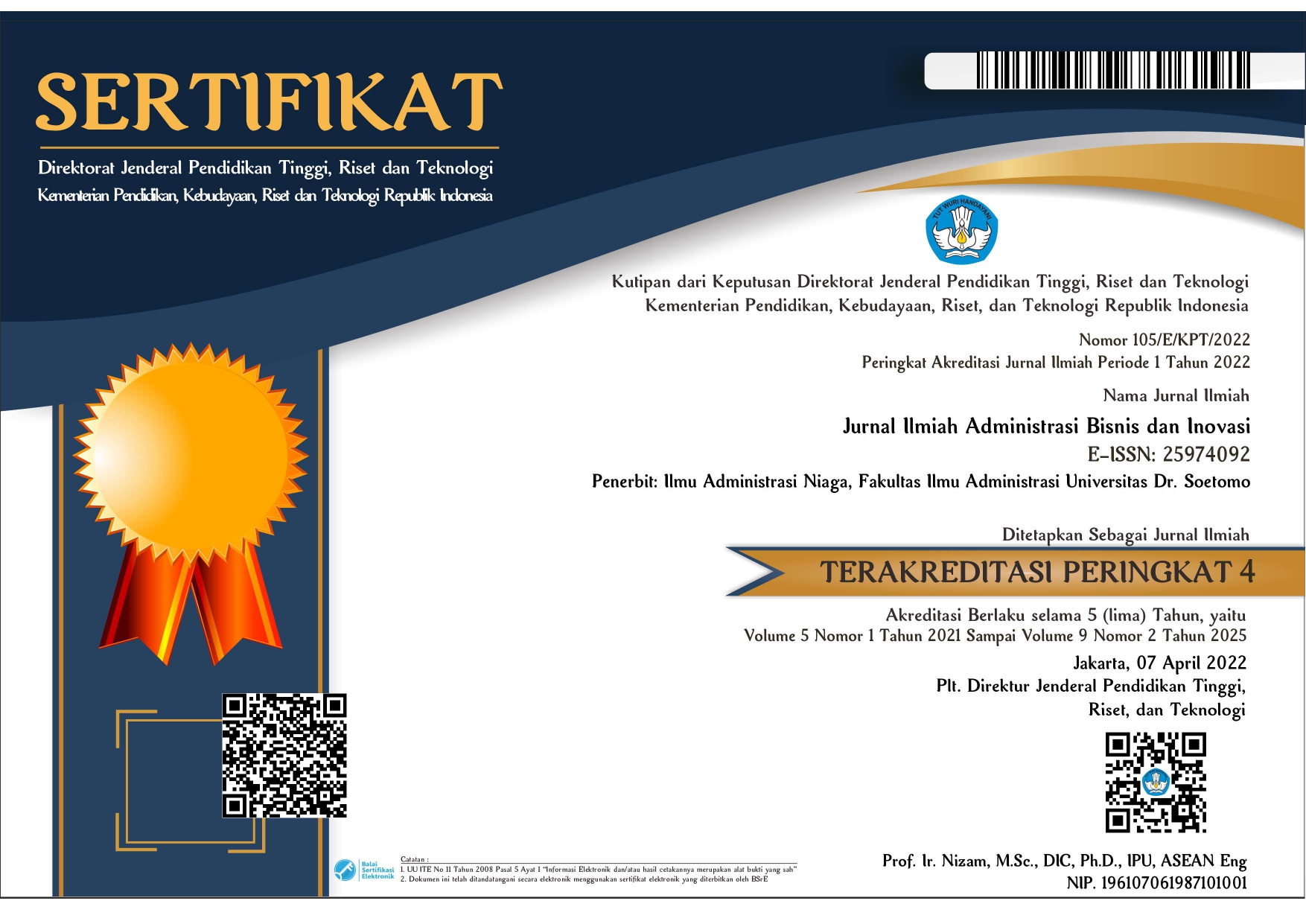Pengaruh Teknologi Keuangan Terhadap Preferensi Konsumen Memilih Uang Digital Dalam Transaksi Keuangan
Studi Kasus Masyarakat Kota Bukittinggi
 Abstract views: 311
,
Abstract views: 311
,
 Full Text (PDF) downloads: 563
Full Text (PDF) downloads: 563
Abstract
The purpose of this study is to find out the influence of Financial Technology on people's preferences to choose E-Money as an alternative to facilitate financial transactions in Bukittinggi City. The method used in this study is a quantitative method. The research variable is financial technology (X) as a free variable and consumer preferences choose E-Money (Y) as the bound variable. Sampling with purposive sampling technique with a sample number of 100 respondents. While the data analysis techniques used are simple regression analysis, validity test, reliability test, classical assumption test and hypothesis test. The results of the study data were tested using SPSS IBM 26. Based on the results of research obtained through a simple regression analysis that is Y = 0.755 + 0.55X. The results showed that financial technology had a positive and significant effect on the prefrence of consumers choosing E-Money because thitung 17,564 > 1,660 and significance of 0.000 < 0.05 then H1 received. Based on the research results, it is expected that the community will be able to be adaptive to modern-day developments that are influenced by the industrial revolution 4.0 so that technological changes can make it easier for consumers, not the other way around, on the other hand, support and socialization from regulators (government) and e-money provider institutions must also be improved so that people do not feel burdened by changes to the system that is applied
References
BPS Sumatera Barat. (2021). PDRB ADHB.
Ferdyant, F., Zr, R. A., & Erika Takidah. (2014). Pengaruh Kualitas Penerapan Good Corporate Governance dan Risiko Pembiayaan terhadap Profitabilitas Perbankan Syariah. Jurnal Dinamika Akuntansi Dan Bisnis.
Imam Ghozali. (2013). Desain Penelitian Kuantitatif Dan Kualitatif. Yoga Pratama.
Nizar, M. A. (2017). Teknologi Keuangan (Fintech): Konsep dan Implementasinya di Indonesia. Warta Fiskal.
Rizkiah, S. K. (2018). Liquidity Management in Islamic Banking: Issues and Challenges. Tazkia Islamic Finance and Business Review, 12(2), 131–152. https://doi.org/10.30993/tifbr.v12i2.148
Rosady Ruslan. (1998). Manajemen Humas dan Manajemen Komunikasi, Konsep dan Aplikasi. PT Raja Grafindo Rosada.
Sugiyono. (2008). Metode Penelitian Kuantitatif, Kualitatif, Dan R&D. Alfabeta.
Sugiyono. (2011). Statistika Untuk Penelitian. Alfabeta.
Syamsu, N., Octaviany, M., Alauddin Makassar, U., Dato Karama Palu, I., & Gunadarma, U. (n.d.). Sustainable Development Goals (SDGs) Melalui Pembiayaan Produktif UMKM di Bank Syariah. https://doi.org/10.35878/islamicreview.v10.i1.269
Copyright (c) 2022 Sandra Dewi, Gheantisa Febria, Rina Anggraini

This work is licensed under a Creative Commons Attribution-NonCommercial-ShareAlike 4.0 International License.
Authors who publish with Inform: JIABI: Jurnal Ilmiah Administrasi Bisnis dan Inovasi agree to the following terms:
Authors retain copyright and grant the journal right of first publication with the work simultaneously licensed under a Creative Commons Attribution License (CC BY-SA 4.0) that allows others to share the work with an acknowledgment of the work's authorship and initial publication in this journal.
Authors are able to enter into separate, additional contractual arrangements for the non-exclusive distribution of the journal's published version of the work (e.g., post it to an institutional repository or publish it in a book), with an acknowledgment of its initial publication in this journal.
Authors are permitted and encouraged to post their work online (e.g., in institutional repositories or on their website) prior to and during the submission process, as it can lead to productive exchanges, as well as earlier and greater citation of published work.








